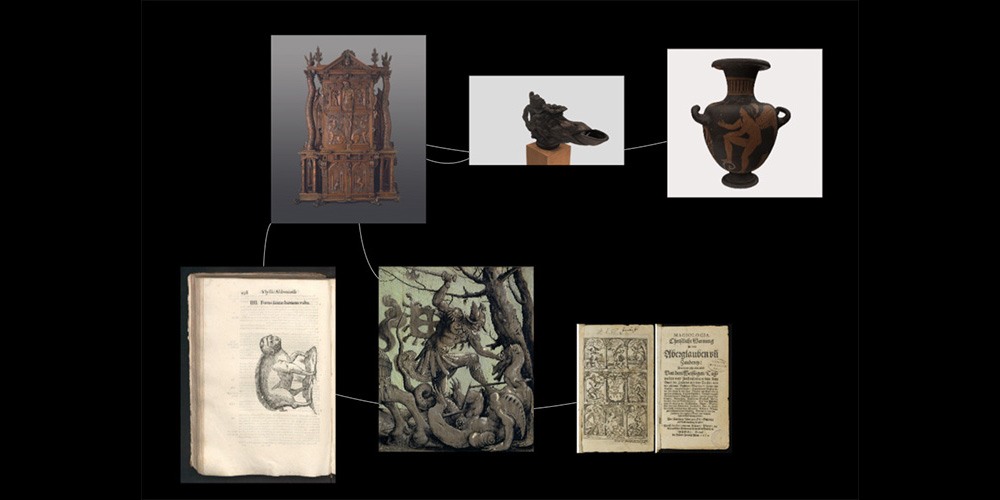
By Christoph Dieffenbacher
Digital technologies offer museums new opportunities for collecting and conveying information. Researchers at the University of Basel are initiating these types of projects and giving historical objects and museum holdings a second home online.
All around the world, museums and collections are increasingly opting to record part of their holdings digitally and to exhibit them online. This allows people to look at the objects up close from the comfort of their own home, and to flip and rotate them at the click of a mouse. Additional information is also provided in the form of texts, images and audio. To create these digital exhibits, 3D models are used, as well as various types of virtual reality (VR) and augmented reality.
By exhibiting their objects online, institutions are able to make their cultural treasures publicly available in a sustainable manner. Researchers at the University of Basel are currently playing leading roles in two projects involving the digital processing of exhibits from local collections.
A new life for the Faesch Museum
The Digitales Schaudepot by the Department of History and the Digital Humanities Lab has already made objects from various museums and collections accessible. To date,
projects have been realized on the Treasury of Basel Cathedral, and VR installations
on the desk of Basel scholar Jacob Burckhardt and the Antikenmuseum. The latest project – curiositas 5.0 – is now virtually compiling the scattered objects from the 17th century Faesch collection, giving this historical assemblage a new look.
The cabinet curiosities established by Basel-born legal scholar Remigius Faesch (1595–1667) included thousands of artworks, books and other objects such as shells, fossils and stuffed animals. It is comparable to the famous Amerbach Kabinett, the world’s first public art collection. Located for many years in a house on Petersplatz and frequently visited by art-loving tourists, the Faesch collection became the property of the university in 1823 and went on to be divided up multiple times. Objects from the collection ended up in the Historical Museum, the Kunstmuseum and the university library. The original collection soon ceased to be recognizable as a single collection.
Open access to cultural heritage
The smorgasbord collection of the “Faesch Family Museum”, compiled over several centuries, is now finally getting a chance to shine again. Having been digitally processed, the objects are now almost tangible – from the antique gold ring and the valuable bowls and trophies right through to a carved cabinet of almost three meters in height. There is also information about the history of the collection and about the societal networks via which the objects ended up in Basel.
“These cabinets of curiosities were not just random accumulations of artifacts and natural phenomena; they were real places of knowledge,” says project manager Prof. Lucas Burkart. “Digital methods and modern storytelling help to show the items in a new format and to make them intelligible as a historical form of knowledge.” In addition to standardizing the data, it’s also important to properly curate the items in the collection. Just like in a physical exhibition, researchers needed to consider how the exhibits should be arranged and how they relate to each other, for example.

As a result, the objects have not only been made available in a digital format, but will also be able to reach a new audience. In order to achieve this, explains the historian, a project like “curiositas 5.0” needs to meet international standards of fair and open data and apply these standards to data on cultural heritage too.
Medieval helmets, sculptures and a black bear
Another project pursuing a similar objective of making museum items more visible is the Schätze aus dem Depot project (“Treasures from the Depot”). This digital exhibition contains works of medieval art from the depots of the Historical Museum, processed for 3D viewing. To create the exhibition, art history students at the University of Basel got to grips with the necessary technical tools and used the “Metashape” program to produce high-resolution 3D models. As well as helmets and sculptures from the late Middle Ages, the collection also includes the “Black Bear” tavern sign with a wooden animal figure, and a waffle iron showing the Annunciation.
Medieval art historian Dr. Martin Schwarz explains one of the particular characteristics of this project: “Our selected objects are not publicly accessible, not even in the form of reproductions.” For the audience, the 3D models are therefore their only opportunity to see the works – and to do so from every conceivable angle. The online exhibition also highlights the technology used and raises considerations regarding the potential of three-dimensional models in art education and research.
Lauch event
The digital exhibition “curiositas 5.0”, showcasing items from the Faesch collection, will officially open with a launch event on 27 April 2023 (6:30 pm, Kollegienhaus, lecture hall 116). The “Treasures from the Depot. Medieval Art in 3D” presentation by the Basel Historical Museum has been online since February.
Source: University of Basel, April 17 2023